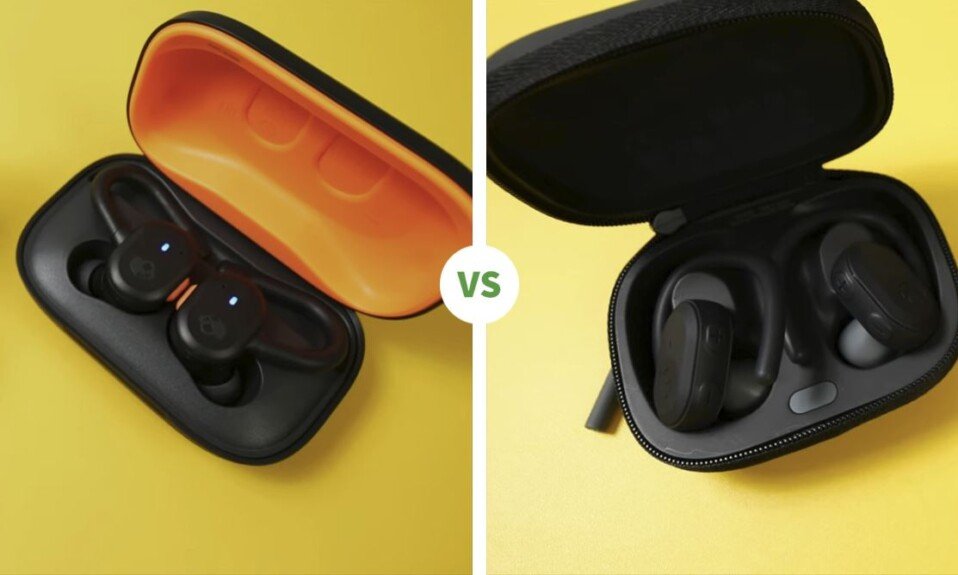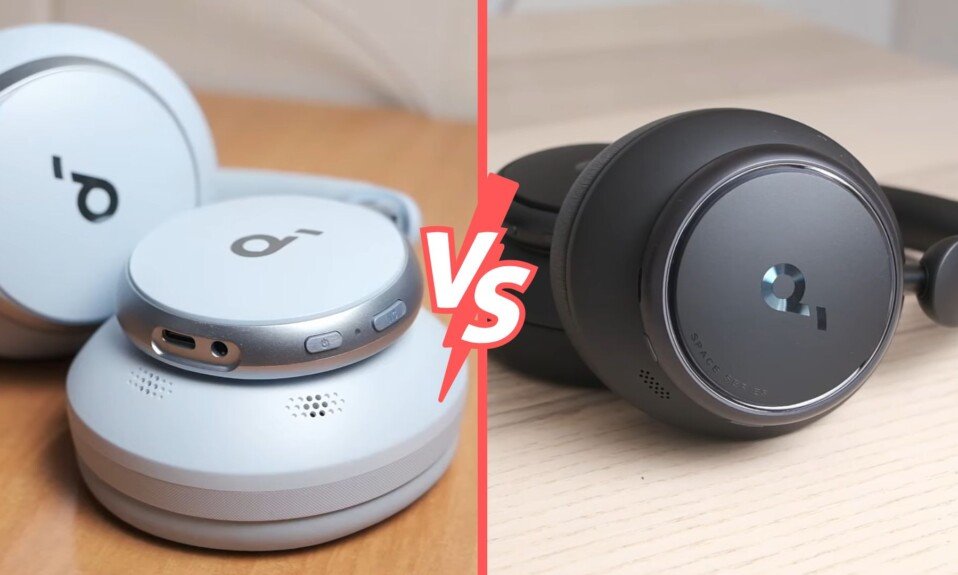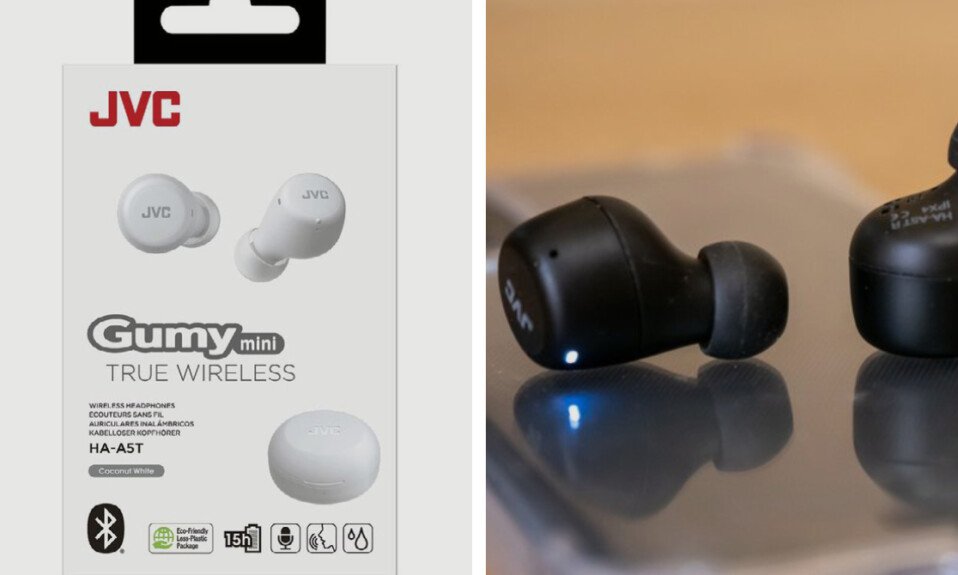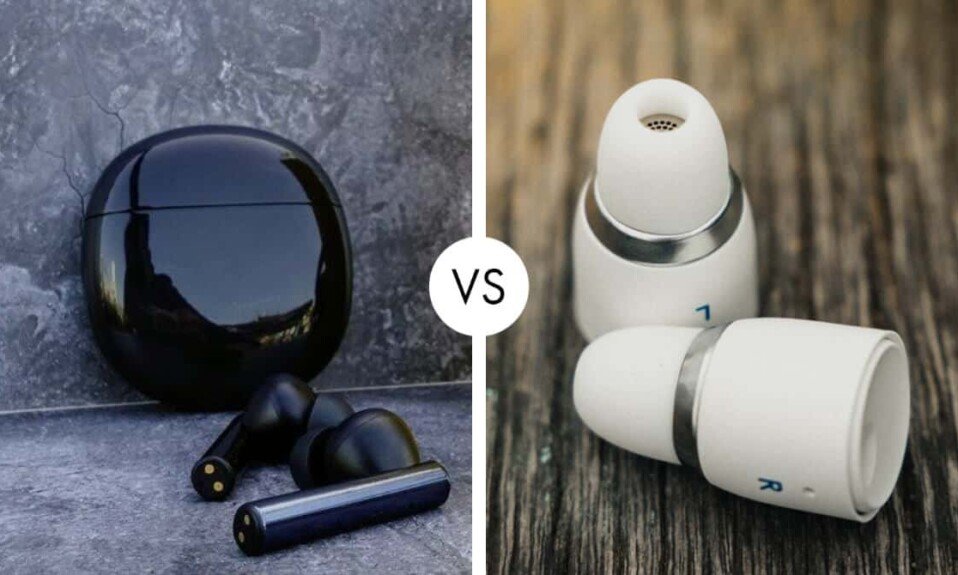Replacing the Freebuds 3, Huawei’s Freebuds 4 do not abandon one of the principles dear to this range, namely the button earpiece format, thus moving away from the excellent Freebuds 4i and the high-end Freebuds Pro. Always close to the Airpods 2 in principle, the headphones of the Chinese manufacturer want to continue to innovate by developing active noise reduction, which remained anecdotal with the Freebuds 3.

The Clone Wars is not over. And if the button earpiece format of Airpods and Airpods 2 has been slightly outdated by the arrival of the convincing Airpods Pro, it continues to grow, mainly through Chinese brands. If Huawei is the actor who came closest to it, with its Freebuds 4, these headphones are still remembered for their unfulfilled promises (ANC and BT-UHD codec ). With the OnePlus Buds, the Chinese manufacturer does not have many claims; it presents them as strong competitors of Apple’s Airpods.

Checkout the technical specification and compare Huawei Freebuds 4 vs OnePlus Buds.
General
| Huawei Freebuds 4 | OnePlus Buds | |
| Brand | Huawei | OnePlus |
| Type | In-Ear | In-Ear |
| Colors | Silver Frost, Ceramic White | White, Gray, Nord Blue |
| Battery life | 4 Hours | 7 hours |
| Weight | 4.1 g (each) | 4.7 g (each) |
| Connectivity | Wireless, Bluetooth | Wireless, Bluetooth |
Design
| Type | In-Ear | In-Ear |
| Wireless | Yes | Yes |
| Driver Type | Dynamic | Dynamic |
| Noise Cancelling | Yes | Yes |
| Drivers | 14.3 mm | 1.34 cm |
| Dimensions buds | 41.4 x 18.5 x 16.8 mm | 37 x 18.81 x 16.13 mm |
| Foldable Design | No | No |

Almost original in 2021, the shape of the Huawei Freebuds 4 is, however, typical of so-called “button” headphones or simply “non-in-ear.” So no cannula and tip system is entering the ear canal; everything is open and rests in the hollow of the ear.
Without revolutionizing the genre, Huawei refines the formula compared to Freebuds 3. The construction is relatively simple but serious, the headphones cut from a light and slightly shiny plastic. The architecture is divided into two parts: a hemisphere housing the transducer and the rod.
For the finish, as for comfort and fit, the Freebuds 4 are largely at the level of the aging Airpods 2. Nothing is luxurious in itself, but this little duo of headphones has no obvious weakness. Above all, Huawei has allowed itself to improve comfort slightly. A little smaller, the hemisphere remaining in the ear can very easily be forgotten and holds perfectly in place.
Add to that an IPX4 certification (resistance to water splashes), and the headphones are perfectly suited for sports use. They are not sold as such, but an open architecture remains very practical for this use because it does not create any overpressure on the eardrum.

The charging box retains the same round appearance, of the previous version, losing 20% of volume in the process. On this point, Airpods retain the advantage of compactness, but the box of Freebuds can still fit, without worries, in any pocket. Like any modern product, it incorporates wireless charging, in addition to USB-C.

Square box, the same dimensions as that of the Airpods, OnePlus announces the color while standing out through the use of a very pronounced red, far from the absolute purity of apple products.
Inside, an ovoid charging case in matt white plastic, a USB-C charging cable, and some documentation for the form. The box of the OnePlus Buds differs slightly from that of its model by this less shiny side but also by a slightly greater thickness. Generally speaking, the volume is more important. In terms of space, we are undoubtedly in a ratio of single to double. In practice, the OnePlus box is quite suitable for storage in a pocket. Nothing to be ashamed of, even if his competitor remains at the top.

There is no induction (wireless) on this box, so only the USB-C connection will allow the product to be charged.
Then come to the headphones, and the finding is already a little more serious. The difference in volume is noticeable, even accentuated, particularly on the back of the headphones, which is much more prominent. The stem is also a little wider and a little more angular than on the Airpods, but also shorter. Impossible to miss the central strapping, a somewhat strange aesthetic stance, undoubtedly allowing to better camouflage the touch controls.
Although bulkier, the OnePlus Buds are not heavier once on the ears. Let’s notice that, unlike Airpods, there is no optical sensor or vent on the inner side, but a kind of mixture, which we will discuss later.
In terms of form, the Airpods remain the undisputed masters. The OnePlus Buds are more than honorable, but there is no point where they really stand out. Only the IPX4 certification (resistance to most water splashes) is a plus in OnePlus’ favor, although this is quite common now.
For fantasy, OnePlus offers a white model (the one tested) and a black version, and a blue version of quite a good effect. These last two versions (especially the black one) are certainly less messy.
Features
| Microphone | Yes | Yes |
| Music Controls | Yes | Yes |
| Quick Charge | Yes | Yes |
| Speakers | Yes | Yes |
| Water-Resistant | IPX4 | IPX4 |
Coping with the ergonomic limitations that earbuds imply, the Freebuds 4 does pretty well. As with the previous Freebuds 3 and the Freebuds 4i, Huawei relies on a touch/tap principle. Long press is also available and even louder; the rod adjusts the volume by being swept up and down. This option makes the headphones stand out from the Airpods.
No default, double-tapping triggers playback, and pause. As for the long press, it allows you to switch between noise reduction modes. Finally, optical sensors automatically pause/play once the headphones are removed or replaced.
The controls are, basically, relatively responsive, even if the earpiece + rod arrangement does not necessarily confer extraordinary stability to the whole. Tapping is a little too dry, and the headphones may move.
Like other Huawei headphones or headsets, use on an EMUI 11 smartphone remains the most optimal because it allows all settings to be integrated as standard and a quick pairing system. Another advantage, in any case on paper (the quality remains to be demonstrated), is the presence of the in-house L2HC Bluetooth codec, already glimpsed on the good Freebuds Studio headphones.

For other users, you have to go through the AI Life application. This allows you to display the battery level of the headphones and the box quite accurately, but also to activate or deactivate certain options such as optical sensors, update the headphones, or
even slightly configure the controls.
This last option remains rather summary because limited by the double-tap (why not have integrated one and three taps? A mystery), as well as by a limited number of actions. Here again, the volume control of the headphones helps to limit the disappointment. In the end, the ergonomics of the Freebuds 4 are not perfect, but still more complete than what the competitor Apple offers.
Another handy little feature is the ability to find your headphones by making them ring at full volume. Associated with AI life, the headphones still do not revolutionize the genre but remain sufficiently developed to guarantee a good experience.
The general volume of the OnePlus Buds is greater than that of the Airpods, and this also applies to the part housing the transducers (the headset itself). No higher or thicker, this part is especially longer, approaching even closer to the ear canal without
ever reaching it.
For those who accept or even love the comfort of Airpods and earbuds in general, no worries. The OnePlus headphones are a bit more intrusive than their competition, but it only really shows up over long sessions. For users who are already a little embarrassed by Airpods, it is best to avoid tempting the devil.
But this slightly more substantial volume also has an advantage since the outfit is still gaining a little notch, which can still be practical for athletes (in addition to the IPX4 certification).
The controls are… pretty dumb. It’s simple; only the double-tap exists (as well as a long press for calls). Already forget your dreams of complete orders.
But even more stupid, this double-tap, valid for both headphones, is set by default on the passage to the next track. How to change it? By way of a OnePlus smartphone, and only this brand for the moment. It’s hard to criticize when Apple is doing the same kind of trick on its Airpods Pro, but it is nonetheless frustrating and almost unusable in practice. Who uses the controls only to move forward?
The opportunity to discuss the absence of an application on an Android smartphone (excluding OnePlus) or iOS, which remains a defect as it is and prevents assigning this double-tapping to something else.

Like the recent Bose QC35 / Headphones 700 or the Google Pixel Buds, the OnePlus benefit from the Google Fast Pair. For any smartphone that is not too antique, open the box, wait for the OnePlus Buds popup to appear, and confirm the pairing. Nothing could be simpler and more efficient. This pairing works on the same principle as Apple pairing, so it is done using the Google account. Another device on the same account can therefore connect to the headphones without having to repeat this operation.
This function also goes hand in hand with the display of the battery level of the two headphones and the box; this is a fairly precise way.
A little more welcome, the headphones can work independently of each other: it is possible to use either the right or the left earbud. On the other hand, no multipoint would have been almost too good for this price range. This function is also still scarce on true wireless, even high-end. The quality of the connection is otherwise decent, although the range is quite low, and the sound jumps are not that rare.
Battery
| Battery Type | Li-Po | Li-Po |
| Battery Life | Up to 4 hours | Up to 7 Hours |
| Capacity | 30 mAh | 35 mAh |
| Charging Time | 1 hour | 2 hours |
| Charging Port | USB-C | USB-C |
| Qi Wireless Charging | No | No |
As the headphones are ANC, two backup times are possible, with or without active noise reduction. Without this function, Huawei advertises 4 hours of continuous use; it is necessary to bet on 2 hours 30 only. In practice, and even counting on slightly increasing the volume compared to in-ear headphones (louder outside noise), these figures are very well respected with AAC codec.
We can all the same underline that 4 hours of autonomy, that’s not much, barely reaching what Airpods offer in practice. Finally, the charging box ensures about four additional cycles, which brings the whole to a correct total autonomy.
On a single charge, and at nearly 30 hours, including the case, the headphones are astounding on this side. The fact remains that, regardless of the listening configuration, the OnePlus Buds are much superior to the Airpods on this point and are the most enduring true wireless button type on the market. The box allows about 2 additional recharges, bringing the total to about 28 hours—a really comfortable score.
Connectivity
| Bluetooth | Yes 5.2 v | Yes 5.0 v |
| Supported Codecs | SBC, AAC | SBC, AAC |
| Multi-Device Connection | No | No |
| Connection | Wireless | Wireless |
| Range | 10 m | 10 m |
Powered by a Kirin A1 chip made by Huawei, the Freebuds 4 use a Bluetooth 5.2 connection, with support for SBC and AAC codecs, and therefore L2HC (which we will not test here, for lack of a compatible smartphone ).
Even without the small advantages of the Huawei ecosystem, the headphones are already perfectly stable and connect extremely quickly to the smartphone. The range is not the most extraordinary, but the sound cuts are rare, even in a crowded environment. Of course, both headphones can connect in mono mode.
And the icing on the cake is, without a doubt, the multipoint connection. It is indeed possible to quickly switch from one audio stream to another between two devices. If the sound stability may suffer slightly from this mode, the whole is still quite acceptable.
OnePlus only integrates the basic codecs, namely SBC and AAC, quite sufficient for headphones of this type and guaranteeing better autonomy.
Finally, OnePlus incorporates a sensor that automatically mutes and restores the music if one of the headphones is removed or replaced. The principle is not very clear but seems to be based on a microphone and not an optical sensor. Thus, simply placing the earpiece near a surface is not enough (at least rarely) to re-engage playback. Therefore, the earpiece could analyze the ear, like Airpods Pro, to slightly adapt its frequency response. No need to speculate too much about this.
Too bad not being able to cut this sensor on classic Android models; not everyone is a fan of the principle. Note that the earphones are compatible with Dolby Atmos following models: OnePlus 7 / 7PRO / 7T / 7TPro / 8 / 8 Pro .
Conclusion!
Small, practical, and extremely comfortable, quite innovative, the Freebuds 4 had everything to be the next generation earbuds. Unfortunately, the revolution is not yet here, despite some good ideas. The headphones are already very decent but priced too high for what they bring.
Button-type True Wireless earphones, the OnePlus Buds are undoubtedly the strongest competitors of the Apple model. If a few ergonomic flaws, which are very avoidable, these headphones are highly recommended for Android users (particularly the OnePlus) interested in this format.




